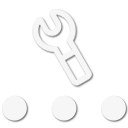
Pathfinder III
- 1,050
- First Name
- Anthony
- Last Name
- Trombley
- Member #
-
30229
- Service Branch
- USAF
Hey fam! As I start to get some trips under my belt, and my blueprint for the rig takes shape, I wanted to stop and ask what safety considerations I need to take when building a cooking/kitchen system on my rig. I see a lot of set ups with stoves built into a drawer, or just on the tailgate of a truck, and have thought: “is it safe to be running propane so close to an 18 gallon container of gasoline?“ I’m not sure if this is a minor enough risk that we has overlanders just accept it, but I’d also like to stay off the nominee list for the next Darwin award!
Thanks for the guidance everyone!
Thanks for the guidance everyone!




